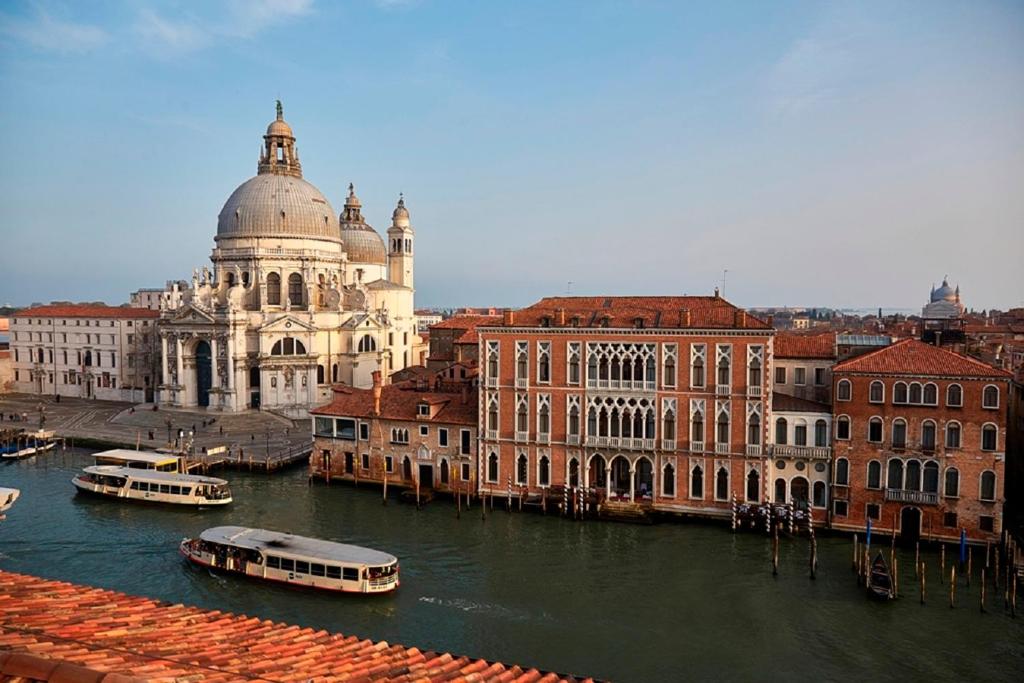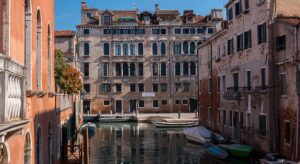Because even Amazon has to take a boat here.
🌊 Introduction: A City Without Roads — How Is That Even Possible?
Venice, Italy — the floating city of dreams, where gondolas glide through narrow canals, bridges outnumber streets, and even the mail arrives by boat. It’s a place that has fascinated travelers for centuries. But behind its poetic beauty lies a question that leaves visitors scratching their heads: how on earth does delivery work in a city with no roads?
In an age of drones, Uber Eats, and same-day Amazon Prime, Venice seems frozen in time — yet it runs with astonishing precision. Forget trucks, vans, or scooters. Deliveries in Venice follow an ancient rhythm powered by boats, porters, and trolleys, moving through canals and cobblestones like a perfectly choreographed ballet.
From crates of fresh fish at Rialto Market to hotel linens, wine barrels, and even furniture, everything reaches its destination by boat and boot. Let’s dive canal-deep into how this mesmerizing city keeps moving — without wheels.
1️⃣ The Basics: Why Venice Has No Roads
Venice is built on 118 small islands linked by over 400 bridges, surrounded and divided by canals that serve as its “streets.” There are no cars, buses, or trucks in the historic center — only boats, handcarts, and strong backs.
This isn’t an eco-trend; it’s history. The city was born from fishermen and refugees who built their homes on marshy islands in the lagoon. Roads were never an option — water was, and still is, the main highway.
So how does anything get delivered? Two words:
By boat. And by foot.
2️⃣ Venice’s Two-Stage Delivery System
Every item delivered in Venice — whether it’s an Amazon box, a cappuccino machine, or a wedding gown — goes through two main stages:
Stage 1: From Mainland to Canal
Everything begins on the mainland, in Mestre or Marghera, where trucks unload at major cargo terminals such as Tronchetto, Piazzale Roma, or Santa Marta. From there, goods are transferred onto flat-bottomed cargo boats called “moto-topo” or “barche da trasporto.”
These boats are Venice’s delivery trucks — sleek, low, and strong enough to carry everything from produce to marble. They crisscross the canals from dawn until early afternoon, docking at shops, hotels, and restaurants along the way.
Stage 2: From Boat to Door — The Venetian Way
Once a delivery boat reaches its stop, the real challenge begins. Cargo is unloaded by hand and placed onto small, wheeled carts called carrioli. Porters — the unsung heroes of Venice — push or pull these carts through alleys, over bridges, and right into doorways.
Yes, every bridge must be crossed by foot. There are no shortcuts, no elevators, no ramps — only skill, stamina, and local know-how. Some porters climb 30+ bridges a day, each load easily exceeding 50 kg. Venice doesn’t build muscles at the gym — it builds them at work.
3️⃣ Meet the Real Heroes of Venice
1. Porters (Facchini Veneziani)
They’re up before sunrise, wearing reflective vests and often pushing carts stacked taller than they are. Rain, fog, or acqua alta — they deliver it all. Porters supply hotels, restaurants, construction sites, and palaces. They know the labyrinth by heart and navigate it like clockwork. Without them, Venice would quite literally stop.
2. Boat Delivery Crews
Behind the porters are fleets of specialized cargo boats run by companies such as CanalJet, VeniceLog, and Traslochi Veneziani. Many are now switching to electric motors to reduce noise and pollution — a small but crucial step toward sustainability in the lagoon.
Each crew has its rhythm — morning markets first, then hotel supplies, then restaurant deliveries. Their timing is dictated by tides, bridges, and permits. In Venice, even logistics moves to the music of the water.
4️⃣ What Gets Delivered (and How Often)
- Every day: food, drinks, linens, mail, and garbage removal
- Weekly: furniture, art shipments, construction supplies
- Seasonally: Biennale installations, film festival sets, wedding décor
Even seafood from Rialto Market follows this route — caught in the lagoon at dawn, sold by 7 AM, and delivered across the city by 9. And yes, oxygen tanks and medical supplies also travel by boat, handled by specialized companies trained for Venice’s terrain.
5️⃣ Amazon, Couriers & Online Shopping: It Works (Sort Of)
Yes, Amazon delivers in Venice. But “Prime” takes on a new meaning here — patience.
- Packages arrive at sorting centers on the mainland.
- Transferred by boat to Tronchetto or Santa Marta.
- Carried by foot or cart to their final address.
Some residents and hotels even use Amazon lockers in Mestre or at the airport. Others prefer buying from Venetian shops to avoid delays — a quiet way of keeping commerce local.
6️⃣ The Challenges of a Roadless City
A. Weather & Tides
Acqua alta can flood entire districts, making routes impassable. In winter, dense fog slows navigation, while summer heat can turn bridge climbs into endurance marathons.
B. The Bridge Workout
Every porter becomes an athlete. Bridges lack ramps, and trolleys break down often. It’s a daily obstacle course — equal parts strength, balance, and Venice-born stubbornness.
C. The Address Problem
Venetian addresses use neighborhood numbers (like “San Marco 1234”), not street names. Delivering without GPS is a skill only locals master.
D. Strict Timing & Permits
Deliveries are allowed only during set morning hours. Miss your slot? You wait until the next day. Venice runs on its own schedule — one that respects both tides and tradition.
7️⃣ How Hotels and Restaurants Keep Up
Hotels receive deliveries early — usually before 10 AM. Many have private docks, while staff help unload supplies the old-fashioned way: by hand and up the stairs. Restaurants coordinate their seafood and produce orders at dawn, working closely with vendors from local markets and fishermen in the lagoon.
The system might look chaotic, but it’s astonishingly efficient. Every Venetian business owner knows their delivery boat by name.
8️⃣ The Reverse Side of Delivery: Waste Collection
After deliveries come collections. Trash in Venice is gathered door-to-door by workers on foot, who roll bins to canal docks. From there, specialized garbage boats carry it to the mainland for disposal. There are no dumpsters in Venice — only boats, bins, and an early-morning army of workers keeping the city spotless.
It’s one of the world’s oldest examples of circular logistics — quite literally.
9️⃣ Moving Houses in Venice — A Full-Body Workout
Moving in Venice is an adventure of its own. Large items like sofas or pianos are hoisted through palace windows using cranes mounted on boats. Watching a Venetian move house is like seeing a historical reenactment — only with IKEA boxes instead of antique trunks.
Specialized crews even handle art and exhibition materials for events like the Venice Film Festival and the Biennale, proving that even masterpieces arrive by motor-topo.
🔴 Emergency Deliveries: When Every Second Counts
Even ambulances float here. The Venetian Green Cross and 118 Water Ambulance Service run specialized boats for medical emergencies. The hospital has its own dock. Firefighters operate water engines carrying hoses and ladders across bridges. It’s a world where saving lives depends on knowing every canal by heart.
💡 Is Venice’s Delivery System Sustainable?
Surprisingly, yes. Venice’s delivery model may be slow, but it’s green:
- Boats emit far less CO₂ per mile than trucks
- Electric engines are replacing diesel fleets
- Minimal noise and traffic pollution
- Locals support nearby shops instead of mass online orders
Still, the system relies on hard physical labor. Porters’ unions advocate for better pay, safety measures, and mechanical ramps to reduce injuries — proving that even paradise needs maintenance.
📚 Fun Facts About Deliveries in Venice
- DHL has a fleet of bright yellow delivery boats.
- Amazon once tested drones here — they got lost in the fog.
- “Barcarol” is the Venetian word for delivery man, from barca (boat).
- Tourists often wave at delivery boats thinking they’re taxis.
🏁 Conclusion: The Magic of Manual Logistics
Venice’s delivery system is more than a logistical marvel — it’s a living reminder of human ingenuity. In a world chasing automation, Venice thrives on coordination, muscle, and centuries of tradition.
Next time you sip your morning espresso by the canal or unwrap a souvenir in your hotel, think of the porter who crossed 20 bridges to bring it there. In Venice, even logistics are a form of art.
🚶♀️ Want to See It for Yourself?
Join our off-the-beaten-path orientation tour or private Grand Canal boat tour to see how the city truly works behind the scenes. From early-morning markets to hidden workshops, our local guides reveal how Venice keeps its delicate rhythm alive.
Book your behind-the-scenes experience with Tour Leader Venice today — and discover how a city with no roads still runs perfectly on time.
FAQs
How do deliveries work in Venice without roads?
Every delivery in Venice — from Amazon packages to fresh fish — happens in two steps: by boat and by foot. Cargo arrives by truck on the mainland, is transferred to moto-topo boats, and then carried through alleys on handcarts by Venetian porters. To see this incredible rhythm in action, join our Venice Orientation Walk — Discover the Real City or our Private 1-Hour Boat Tour (Grand Canal + Hidden Canals), where you’ll witness how goods (and even garbage) move through this roadless masterpiece.
Does Amazon actually deliver to Venice?
Yes — but not quite the same way you’re used to. Packages travel by truck to Venice’s main cargo terminals at Tronchetto or Piazzale Roma, then by boat into the city. From there, local porters carry parcels door-to-door. Deliveries can take longer due to tides, bridges, and limited access hours. Many locals prefer supporting artisan shops — check our Venice Hands-On Workshops to meet the makers who keep traditional craftsmanship alive.
Can visitors see Venice’s hidden logistics system?
Absolutely. Our Off-the-Beaten-Path Orientation Tour reveals how Venice runs behind the scenes — from market deliveries and garbage boats to artisan studios that still depend on these canal routes. Or for a more scenic option, take our Venice Tour of the Lagoon — Discover the Hidden Gems and see the same waterways that power Venice’s silent economy.







